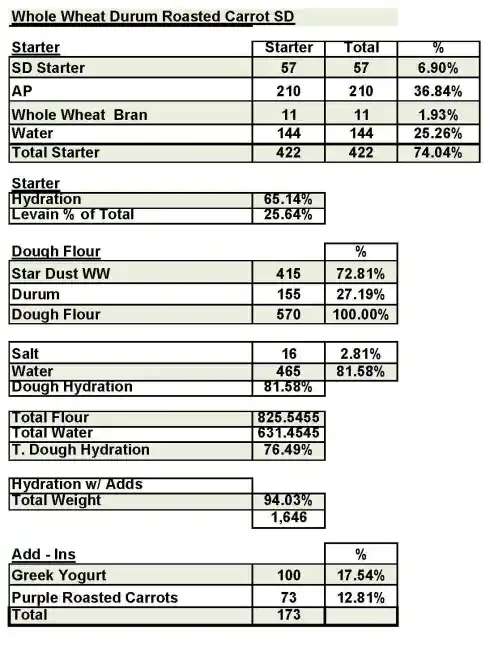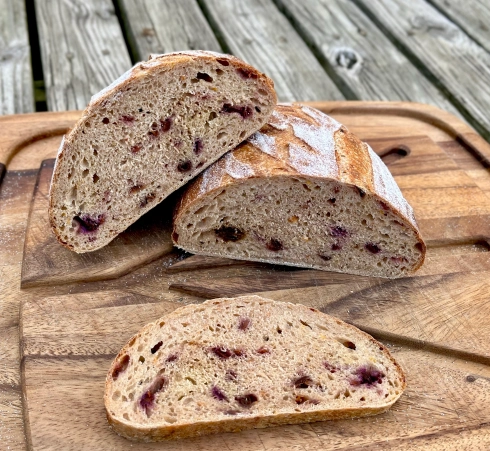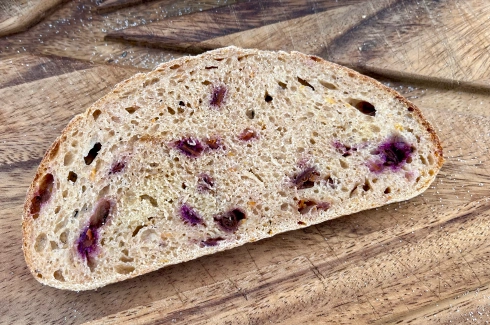


Crumb Diagnosis
Hello,
I'm hoping to receive some feedback on my crumb structure in an effort to make it more consistent and open. Ive been making four to six loaves a week for the last few months and have been struggling with both consistent oven spring and open crumb structure. Any feedback or input would be greatly appreciated.
712g (75%) H2O @ 90F
190g Leaven (20%)
855g White Flour (90%) (Cairnspring Trailblazer 13-14% protein)
95g Whole Wheat (10%) (King Arthur)
19g salt (2%)

Troubleshooting Stencil Inconsistencies
Hi everyone, I have been trying to get this custom rose logo onto my SD loaves for many weeks now, and keep getting disappointing results with the Rice flour looking burnt or fully disappearing. Here are my specs: 80% Bread flour (14% protein), 20% Whole Wheat, 70% total hydration, 25min autolyse, 23% starter, 2.7% salt, bulk fermentation with 3x stretch + fold every 30min.

First timer with sourdough

for those desperately seeking a dutch oven
sur la table has a 5qt round Staub DO on sale for $170 with free shipping. Still highway robbery, but far cheaper than list.
https://www.surlatable.com/staub-5qt-tall-cocotte/PRO-5646989.html

The Panettone cooling / hanging rack
Panettone needs to be cooled upside down after baking to maintain its fluffy texture and prevent it from collapsing. Here's why:
Preserves the Dome Shape: Cooling panettone upside down helps maintain its iconic dome shape
Prevents Collapse: The delicate and airy texture of panettone can collapse if left standing upright after baking. Cooling it upside down prevents this collapse
Allows Even Cooling: Cooling upside down ensures that the entire panettone cools evenly, preventing any uneven settling or condensation

Still struggling
70% Hydro Biga made with AP
Final doughs: Exactly the same was used for both breads.
-2.5G ADY
-369 H2O
-100G BIGA
-500G FLOUR
-450° in Dutch oven heated through to 450°
AP- (Store brand All purpose) Mix, autolyse (20 min),bulk (4Hr-doubled) and final (2Hr)
KA- (King Aurther Unbleached bread flour 12%P) Mix, autolyse (20 min),bulk (6Hr-doubled) and final (2Hr)
Weight before baking both were about 976G

Atta Flour - Yes, You Can!
Atta flour is a general type of flour used in India and other nearby countries for making rotis (aka chapattis, basically similar to flour tortillas). It is often said that atta flour cannot be used for making bread (TFL has several posts on bread made with atta, but since the term covers a wide range of flours, it's hard to know how comparable they were to the flour used in this post). Why not, and how true is it?

The Winston knot explained in detail
Rockin the granddad bod. Check the full storyline in my blog. I miss spoke not the Winsor knot, The Winston knot.








